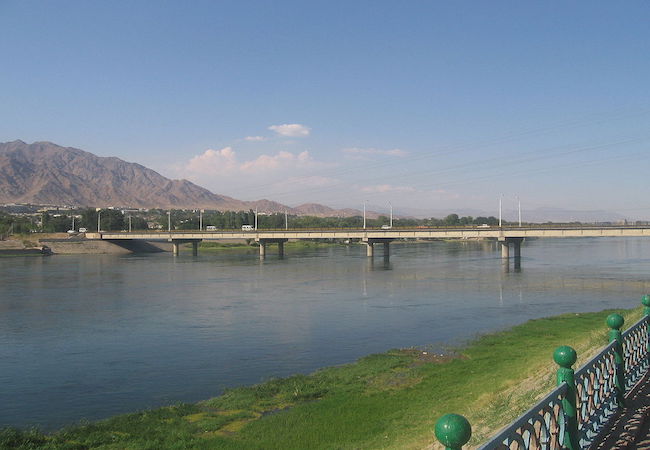
By Zahid Khan
Central Asia is endued with plenty of opulent and manifold energy resources — hydropower, coal, oil and gas. These resources are strenuous in the Kyrgyz Republic and Tajikistan, the explorations and production countries of Central Asia’s Amu Darya and Syr Darya rivers. The Central Asia Energy Water Development Program [CAEWDP] recognizes that, energy-hydropower linkages are inseparable from perceptions of economic growth, national security, and regional stability— strengthen association at the national and regional levels can steer to boost up incomes, sustainable development, poverty reduction, mutual prosperity, and political stability athwart the region.
On May 12, leaders of four countries Pakistan, Afghanistan, Kyrgyzstan and Tajikistan summit to launch the Central Asia-South Asia [CASA]-1000 energy project—consequential milestone for the development of the two regions. The electricity link of 1200 kilo Meter, 1300 Mega Watt known as CASA-1000 is ready to connect the four countries by 2018. It intends to endow with surplus electricity from Central Asia to the two countries in the southern-part of the continent, mitigating their energy crisis. Tajikistan is predictable to endue more than 75% of the electricity anticipated by the project, while neighboring Kyrgyzstan will supply the residue. Afghanistan will be receiving 300 MW of electricity and Pakistan the remaining 1000 MW.
The World Bank report on CASA-1000—Countries from both Central Asia and South Asia regions are demonstrating strong commitment to the regional cooperation, addressing their energy challenges together by developing the vision of CASAREM (Central Asia South Asia Regional Electricity Market). It will also ascertain and develop inter-regional linkages between Central and South Asia. The project conceived on the parallel lines as the North-American grid bridged over 340,000 km and European power system traversing a territory of 230,000 km, though determined but seems attainable.—it has the support of the World Bank and other donor agencies. Russia had initially opposed this project, but now it has not only expressed support, but also promised to contribute $500 million for it.
According to the Annette Dixon, Vice President South Asia, World Bank—for Afghanistan and Pakistan, CASA-1000 will ease electricity shortages during the peak summer season when demand is highest. A shortage of energy is cited as the main and most binding constraint to business operation, expansion, and job creation. CASA-1000 will also help reduce the countries’ dependency on costly, polluting oil-based power generation—it could help establish Afghanistan as a viable transit country, initially for electricity and perhaps later for other exchanges, as the transmission lines will cross through its territory into Pakistan. This could improve the country’s growth and stability prospects by strengthening ties to neighbors and the wider region. Exporting surplus electricity during the summer will help the two countries generate the precious foreign exchange revenues they need for priority investments, for improving infrastructure and services to their citizens.
In addition to the infrastructure investments, the CASA 1000 project also has a design to provide country-specific social and community support programs, during construction period. These programs will help improve livelihoods in communities living along the project corridor and facilitate revenue-sharing. Over six hundred communities living on the corridor of the CASA-1000 project are expected to benefit from these interventions—the four countries have also agreed to share a portion of revenue from every unit of energy traded to continue supporting the Community Support Program, throughout the life of CASA-1000 Project. It is a transformational project, it will give a much-needed boost to energy security, improved connectivity and trade across two regions at a critical time. It demonstrates the power of regional cooperation through four countries reaching agreement on a project that is a win-win for all involved. The project also helps to revive the Silk Road, the ancient route linking East with West, in a region that used to be separated by hard borders.
The World Bank has already admitted that security remains the highest impeach to this project—both countries acquire to prevail over this highly bothersome aspect through mutual cooperation and bridge the trust deficit that exists. Conceivably, if all parties grasp that a peaceful, prosperous future for the region lies in greater inter dependence, they might outset working for each other’s mutual benefit—this region has a path-way to promote regional cooperation and integration, create good jobs for its populations to alleviate poverty and achieve shared prosperity. This is not without challenges, but indeed, as we see today, it is achievable. Such projects create interdependencies and give the countries a stake in each other’s stability and security. CASA-1000 is an impeaching project because four countries crossways of two regions have had to work together to make this happen. It is also being built in countries facing issues of feebleness and conflicts. The economic attain from the project can contribute to peace and stability in the regions of Central Asia-South Asia.




